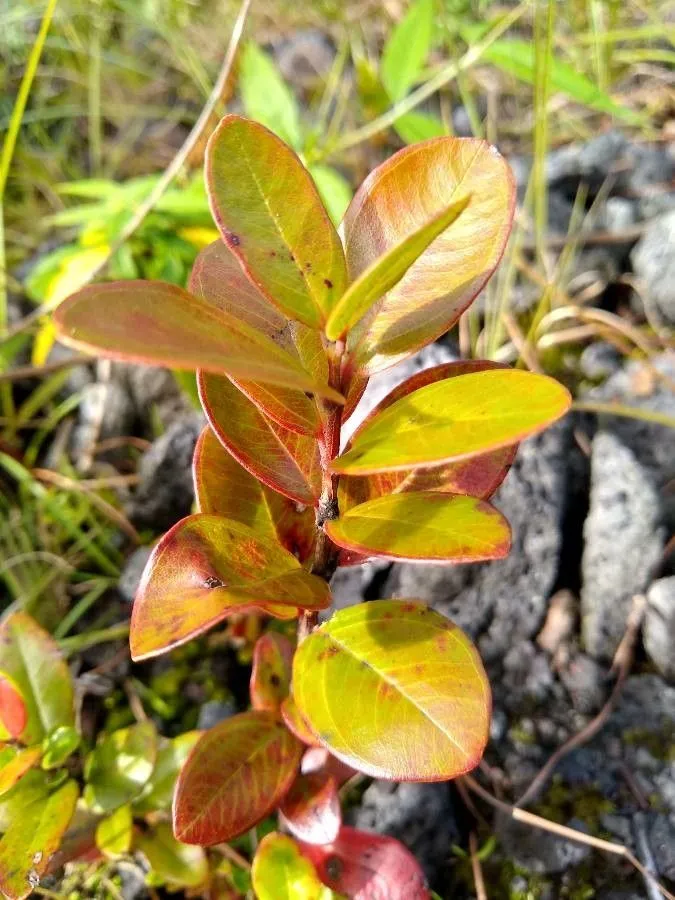
Author: Gaudich.
Bibliography: Voy. Uranie: 482 (1830)
Year: 1830
Status: accepted
Rank: species
Genus: Metrosideros
Vegetable: Unknown
Observations: Hawaiian Is.
The ‘ohi’a lehua, scientifically known as Metrosideros polymorpha, is a remarkable species belonging to the Myrtaceae family. Native to the Hawaiian Islands, this resilient plant has intricately woven itself into the natural and cultural landscape of the region.
‘Ohi’a lehua is one of the first plants to colonize new lava flows, demonstrating its exceptional adaptability and vital role in island ecology. This pioneering species is fundamental in establishing environments that can support a variety of other life forms. Over time, ‘ohi’a forests provide essential habitats for various native birds and insects, playing a crucial role in sustaining Hawaii’s unique biodiversity.
The plant’s beauty is vividly displayed in its striking flowers, often red but sometimes orange, yellow, or even white, which bloom on its branches. These blossoms are not only visually captivating but also vital food sources for native nectar-feeding birds like the Hawaiian honeycreepers. The flowers’ aesthetic and ecological significance make ‘ohi’a lehua a symbol of life and regeneration across Hawaii.
In Hawaiian culture, ‘ohi’a lehua holds deep traditional significance. The plant features prominently in myths and legends, often associated with themes of love and perseverance. Ancient Hawaiians also used parts of the ‘ohi’a lehua for various purposes, including crafting tools and lei-making, recognizing and harnessing the plant’s versatile properties.
Today, ‘ohi’a lehua faces challenges from invasive species and diseases, such as the devastating Rapid ‘Ohi’a Death (ROD) caused by fungal pathogens. Efforts to protect and conserve this iconic species are crucial, as it remains an integral part of Hawaii’s natural heritage and ecological health.
First officially described in 1830, based on observations during the Voyage of the Uranie, Metrosideros polymorpha continues to be a subject of interest for botanists and ecologists alike, highlighting the enduring fascination and importance of ‘ohi’a lehua in both scientific and cultural contexts.
Eng: ‘ohi’a lehua
En: ‘ohi’a lehua, Ohi’a lehua
Taken Sep 20, 2020 by Emma Wallace (cc-by-sa)
Taken Aug 14, 2022 by Annette Charles (cc-by-sa)
Taken Mar 2, 2022 by Allan Spitzer (cc-by-sa)
Taken Mar 2, 2022 by Allan Spitzer (cc-by-sa)
Taken Jan 29, 2022 by Clemens J. Mayer (cc-by-sa)
Taken Jul 25, 2004 by Daniel Barthelemy (cc-by-sa)
Taken Jul 25, 2004 by Daniel Barthelemy (cc-by-sa)
Taken Jul 25, 2004 by Daniel Barthelemy (cc-by-sa)
Taken Aug 2, 2004 by Daniel Barthelemy (cc-by-sa)
Taken Apr 30, 2021 by Pereira Jorge (cc-by-sa)
Taken Aug 14, 2022 by Annette Charles (cc-by-sa)
Taken Sep 27, 2022 by Francis BurWei (cc-by-sa)
Taken Jul 23, 2022 by Bird (cc-by-sa)
Taken Mar 2, 2022 by Allan Spitzer (cc-by-sa)
Taken Jan 3, 2021 by Shelagh A (cc-by-sa)
Taken Aug 2, 2004 by Daniel Barthelemy (cc-by-sa)
Taken Aug 2, 2004 by Daniel Barthelemy (cc-by-sa)
Taken Aug 1, 1995 by Daniel Barthelemy (cc-by-nc)
Taken Aug 1, 1995 by Daniel Barthelemy (cc-by-nc)
Taken Apr 30, 2021 by Pereira Jorge (cc-by-sa)
Taken Mar 2, 2022 by Allan Spitzer (cc-by-sa)
Family: Myrtaceae Author: (F.Muell.) K.D.Hill & L.A.S.Johnson Bibliography: Telopea 6: 402 (1995) Year: 1995 Status:…
Family: Rubiaceae Author: Pierre ex A.Froehner Bibliography: Notizbl. Bot. Gart. Berlin-Dahlem 1: 237 (1897) Year:…
Family: Sapindaceae Author: Koidz. Bibliography: J. Coll. Sci. Imp. Univ. Tokyo 32(1): 38 (1911) Year:…
Family: Asteraceae Author: A.Gray Bibliography: Pacif. Railr. Rep.: 107 (1857) Year: 1857 Status: accepted Rank:…
Family: Fabaceae Author: Medik. Bibliography: Vorles. Churpfälz. Phys.-Ökon. Ges. 2: 398 (1787) Year: 1787 Status:…
Family: Aspleniaceae Author: (Cav.) Alston Bibliography: Bull. Misc. Inform. Kew 1932: 309 (1932) Year: 1932…